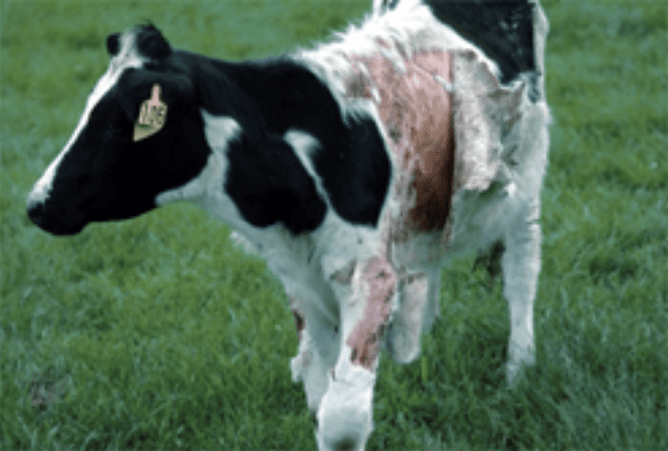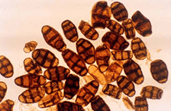What Causes It?
Facial eczema is caused by the spores of a fungus (Pithomyces chartarum). These spores contain a compound which is toxic to the liver. The damaged liver leads to photosensitivity, making all the white areas of the animals or bare skin a lot more susceptible to sunburn. Lesions are normally seen around the face, the white sections of the back and the udder.
When are we likely to get it?
Spores develop when the humidity has been around 100%, and the temperature is above 12°C for at least 4 consecutive nights. The Grey Valley has seen cases rising over the last five years, with sporadic cases popping up in other areas. Our risk period is later that of the North Island, with clinical signs usually showing up late February/ early March.
Clinical signs – When we see these signs it is too late – the damage occurred 10-14 days before this.
Sudden drop in milk production
Transient diarrhoea
Inflammation and peeling of the skin (especially the white patches)
Flicking of the tail, kicking at the udder
Jaundice (yellow membranes – gums, eyes and vulva)
Frank blood in urine
Actively seeking shade
How can I treat it?
Unfortunately, once signs have started there is no way to reverse the damage, they just need time to heal. Metacam (pain relief) and Antimine (antihistamine) can be used to reduce pain and inflammation, and zinc barrier creams to prevent further sun damage.
The best thing for dairy cows that are suffering is to dry them off and put them in paddocks with shade available.
Prevention is always better than cure. There are 4 main preventative measures:
Predicting when the risk is high by pasture spore counting - spore counts can differ dramatically between farms, but also between paddocks on the same farm
Avoiding cows eating the spores - ensure cows are not grazing too low, minimise the amount of dead matter in the sward
Prophylactic zinc - aids in protecting the liver. The levels of zinc we give are near toxic so spore counting helps us make decisions about starting and stopping treatment. Copper status interferes with zinc’s protective properties, so feeding PKE or giving high doses of copper supplementation over the facial eczema period are not recommended
Breeding for resistance - there is evidence that some animals are more resistant than others to FE, breeding for resistance is something that we may see more in the future.
Remember:
Zinc treatment needs to begin BEFORE the risk period begins, start with half doses to get the cows used to it, then when spore counts begin to rise, increase up to the full dose
Test 10 cows 3 weeks after beginning zinc supplementation to ensure levels are protective
There are many different ways to get zinc into your cows, each product has a different dose rate so it is important to check the label and dose accordingly.


